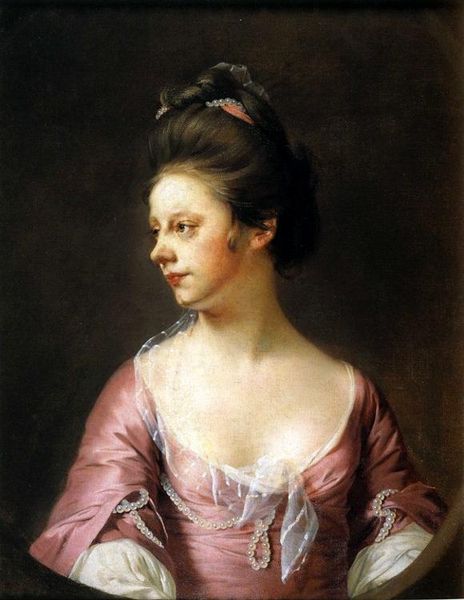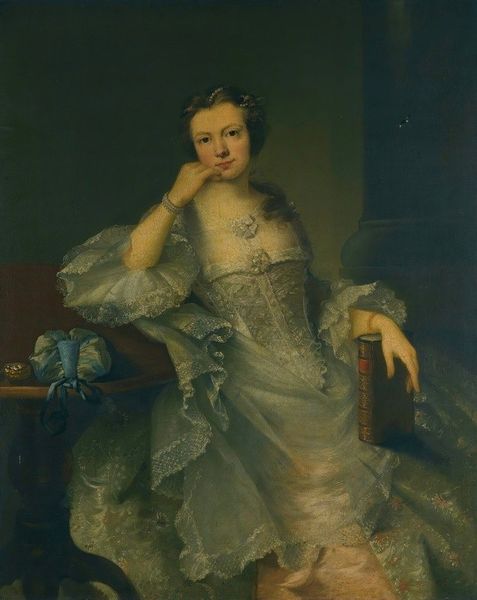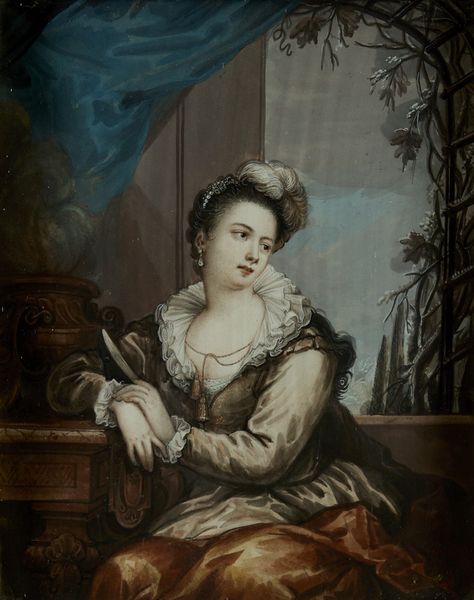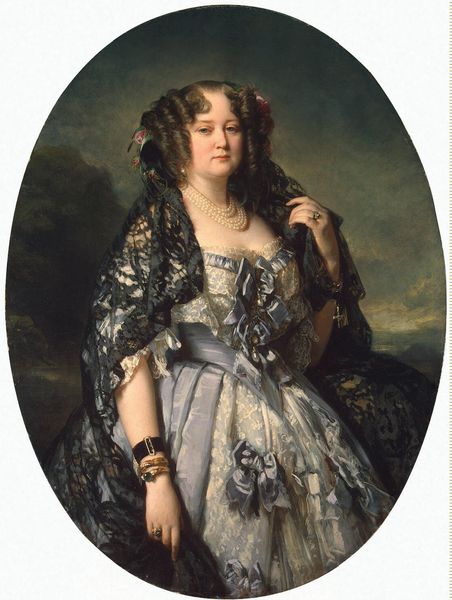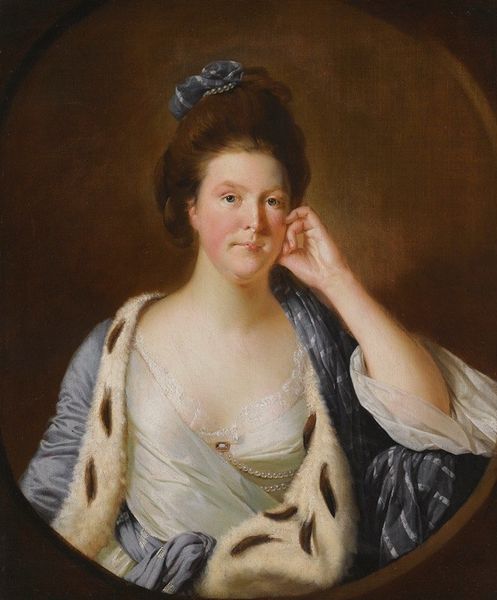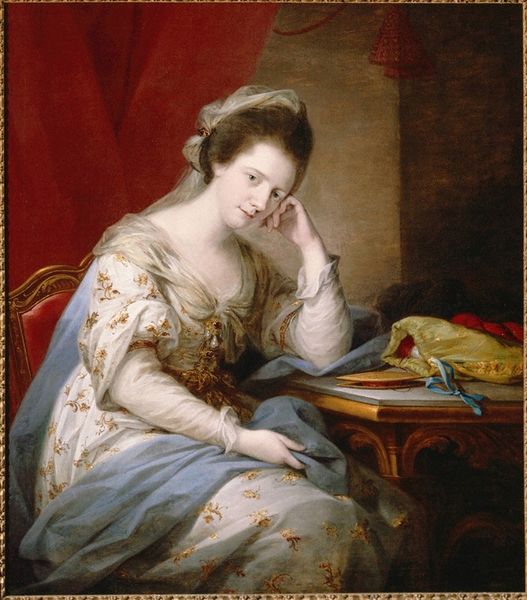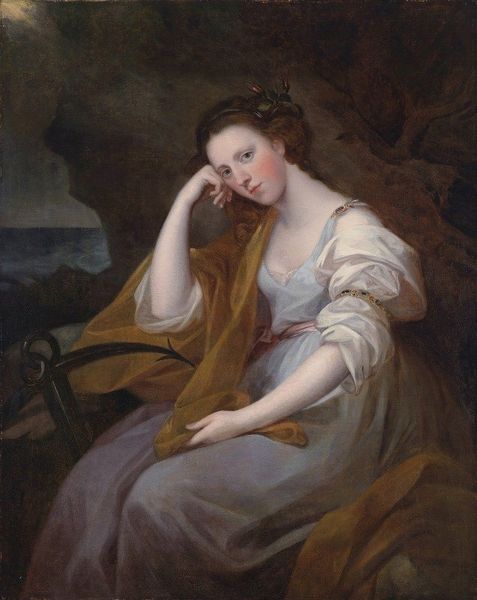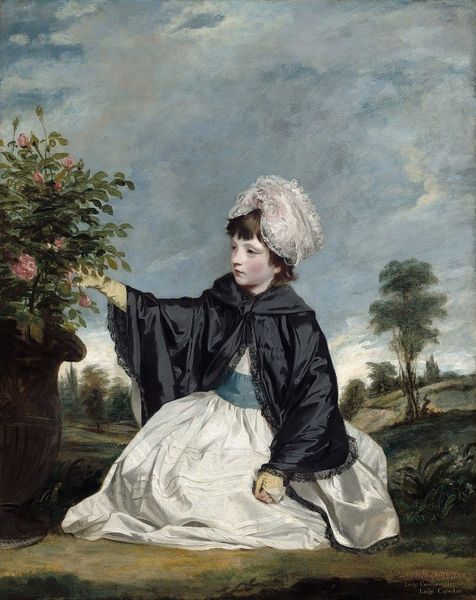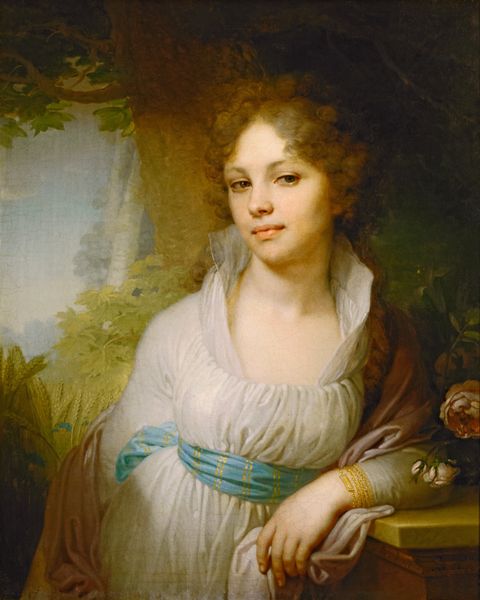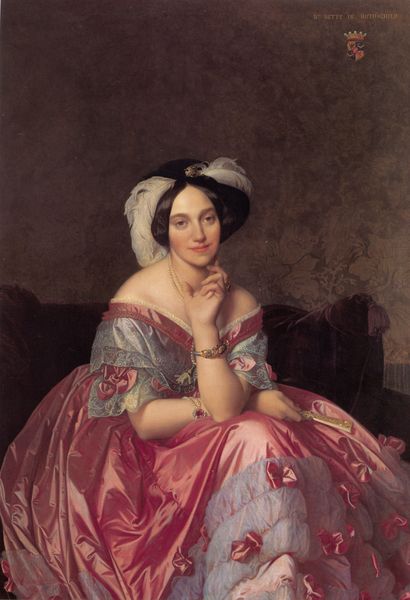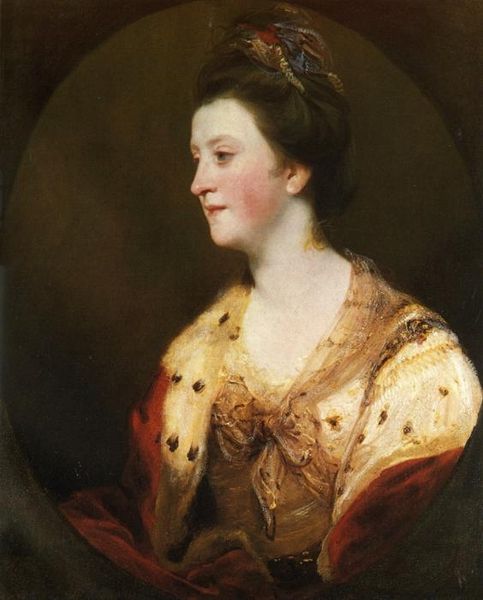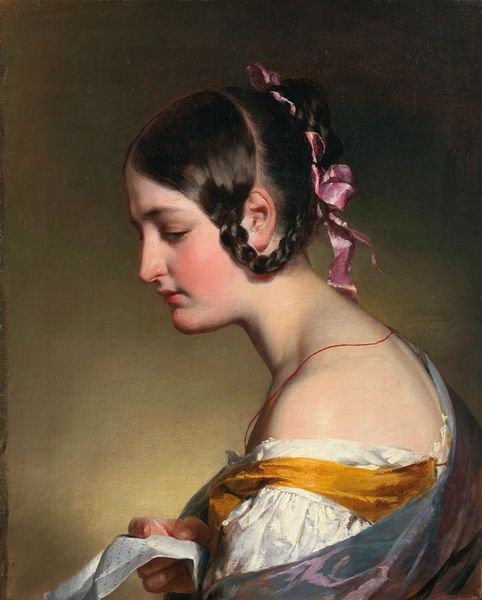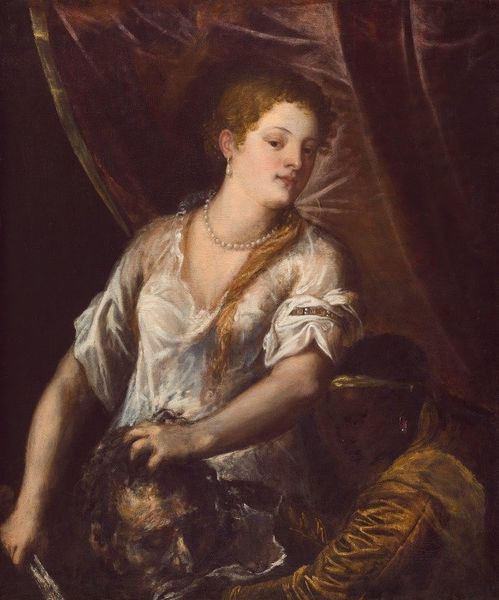
Copyright: Public Domain: Artvee
Curator: John Singleton Copley painted "Mrs. Clark Gayton" in 1779. It's an oil on canvas portrait. It strikes me how skillfully Copley captured not just Mrs. Gayton’s likeness, but also a sense of her social position within the late 18th century. Editor: Immediately, the pose arrests my attention. It's this mixture of pensiveness and a certain relaxed elegance. Her hand touching her face – a classic melancholic pose, but subtly infused with assurance. I sense a knowing glance from her eyes, a sign that she's more aware of herself and her position than the conventional portraits of the era. Curator: Indeed. Copley often walked a fine line, didn’t he? Here we see the Rococo style expressed with great clarity, from the rich, almost theatrical drape of the red fabric behind her to her elaborate hairstyle, all indicators of wealth and status. But he always had an interest in portraying character, reflecting an era preoccupied with defining social rank and civic virtue. The American Revolution was brewing; social identity was in flux, both here in England and in the States. Editor: It’s interesting you say "civic virtue" – to me, that potted plant next to her window seems deeply symbolic. We often read flora as allegories of growth, cultivation, domesticity – all concepts attached to women's roles in the Georgian era. This painting doesn’t simply present a wealthy woman; it presents an idealized version of femininity and home. Curator: That's astute. The presence of the plant does highlight the artifice of constructed social roles, how the sitter participates in a highly stylized visual performance. Mrs. Gayton's slightly ambiguous gaze adds to that effect. It is hard to know, exactly, how much we're being invited to critique this construct, and how much to simply take it at face value as the expected presentation of a woman of quality. Editor: Right, the painting exists as a historical marker but also perpetuates specific social standards, through which beauty and status are interlinked. Yet I can't help feeling drawn to the genuine confidence, that hint of personal depth beyond the fashionable surface, it offers a dialogue about the period that's both informed and emotionally present. Curator: I completely concur. I will certainly be revisiting my earlier conclusions regarding Copley’s intentions for future reflections. Editor: Agreed. A work that is certain to provoke debate for many years to come.
Comments
No comments
Be the first to comment and join the conversation on the ultimate creative platform.
